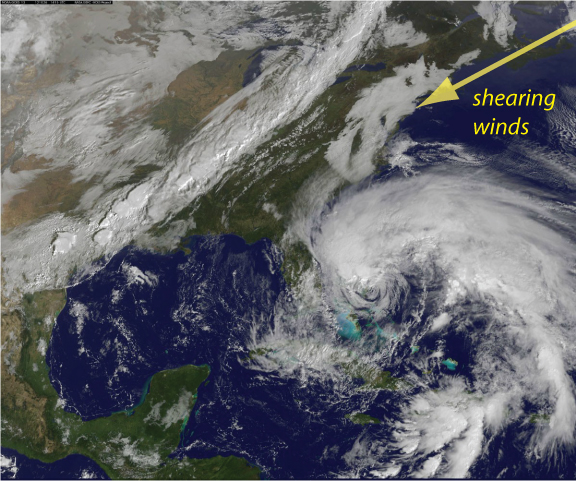
ADVERTISEMENT
I'm an employee of The Old Farmer's Almanac General Store. While trying to push the new 2014 Almanac, we're constantly asked whether or not the booked predicted Sandy would hit. From what I'd seen, it didn't look like it did. Am I missing something? Thanks for the help!
-Eric
Supervisor at The Old Farmer's Almanac General Store, Bethlehem,PA
Hi, Eric,
You're not missing anything! We did not predict it‚ and neither, it seems, did much of anyone else, including forecasters in the days preceding. Sandy was a unique confluence of events.
--Your OFA editors
Last month in October, we ended the streak of above average warmth and November is bringing something quite the same.. powerful snowstorms moving up the east coast bringing winter blasts then the cold will bite the west (there is alot of snow out west right now) and the east has a mild break. Now im hearing the pattern will reverse itself and biting cold will move away from the west and bother the other folks in the midwest and east coast. Is this the pattern we'll see this winter? Everybody will have their fair share of wintry blasts and snow. I commented on your last blog and asked something about Sandy. Well were all fine! The northeast is doing quite well recovering as well.
The weather patterns between winter and spring have become a month later, with snow towards January and with snow possible late April. There hasn't been a normal pattern for several years. Snow is an insulator around your foundations and rooftops, heating bills are reduced as the drafts from non-snow days are blocked. Hopefully, we will get snow for the economic benefit, just not foot measures of it.
Its been too cold here in the northeast. Im going to get outdoors and enjoy the nice fall days while we have them. When they say 70 degrees in November.. you take it!!! I dont even think itl be this warm again until spring. Ive been hearing many many many times that this winter the cold is indeed coming and winter is 43 days away so we better get some work done, just as a warning in advance when will the -NAO come back? Brrrrrrr..
Should I give up hope on winter now, its supposed to be unusually warm the next 2 weeks in Virginia. Its just such a crime to have cold weather now. I miss winter oh so much. When will the warm weather leave us alone?! I dream of a cold December afternoon with snow glistening in the sunlight, that would actually be my christmas present (I guess that was before 2011)
Actually a cold front is going to move through your area in the mid atlantic and northeast. It will knock down the temperatures into the 50s next week so enjoy one more warm day!!
And theres clues the cold will be back by Thanksgiving. Dont give up on winter. Just like Evelyn said.. this winter will be much much colder than last. This pattern we're in now is favoring colder weather and storms on the east coast. Odds are, you will get your December afternoon you dream of :) Have a GREAT holiday season and enjoy your winter that is officially less than 6 weeks away
sources: http://www.cpc.ncep.noaa.gov/products/precip/CWlink/pna/nao_index_mrf.shtml
You see that the -NAO is setting up (thats good news for you) My uncle used to be a weatherman and I know quite a bit about the weather myself
How about the Northwest part of the country? West of The Cascades? We haven't had a good cold snap for a few years! We need a good cold winter to control all the bugs! Also, I Love the snow!
On NOAAs long range temperature predictons they're calling for above normal temperatures all the way up until November 21!! (the farthest we can see) Is this gonna be yet ANOTHER unusually warm Thanksgiving and holiday season? I want the cold to come back to the lower midwest and east coast soon. I too agree the holiday season last year was ruined by spring-like warmth
Does this mean it will reach as far as Southwestern Ontario Canada again also?











